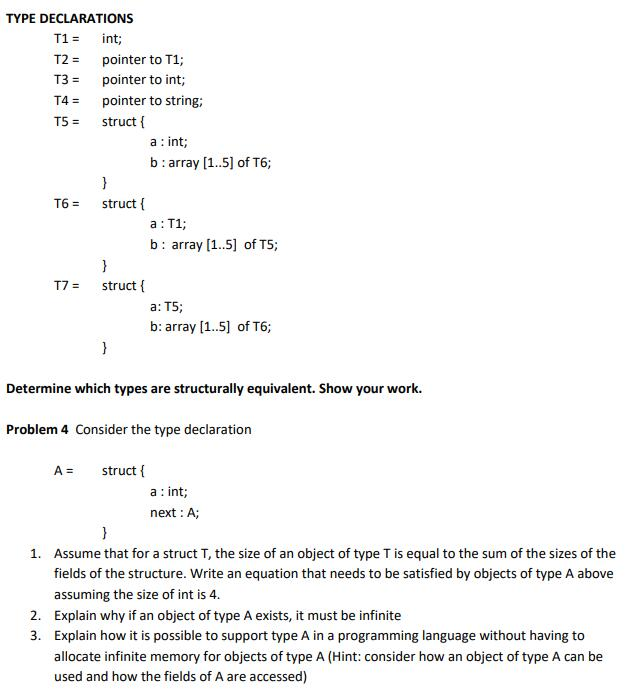Answered step by step
Verified Expert Solution
Question
1 Approved Answer
TYPE DECLARATIONS T1nt; T2 = pointer to T1; T3pointer to int; T4 pointer to string: T5 = struct { a int; b: array [1.5] of

Step by Step Solution
There are 3 Steps involved in it
Step: 1

Get Instant Access to Expert-Tailored Solutions
See step-by-step solutions with expert insights and AI powered tools for academic success
Step: 2

Step: 3

Ace Your Homework with AI
Get the answers you need in no time with our AI-driven, step-by-step assistance
Get Started


